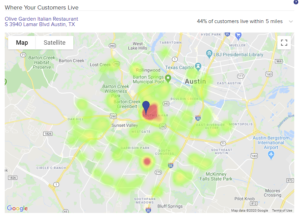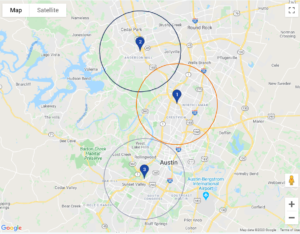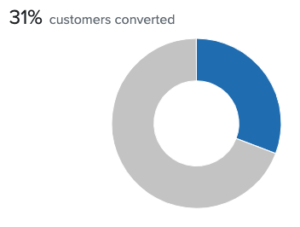How Restaurants Use Location-Based Marketing To Drive Sales
September 12, 2022 by
Many restaurant brands have been forced to get creative in generating demand and ensuring ticket volumes remain at healthy levels. But how are they getting the word out efficiently? Ad dollars aren’t unlimited.
Driving Sales with Location Based Marketing
There isn’t enough time or budget to create a TV ad, and restaurant owners and advertisers need to get messages out ASAP. A digital campaign is quick to put together and the simplest way to engage audiences.
Tight budgets also call for optimizing ad spend. One way to do that is to reach the most high-intent audience. Geotargeting and location-based marketing power these specific audiences for maximum targeted reach. Here is how to create the most meaningful audience so you can grow your take-out, curbside pickup and delivery business.
Reach Your Customers
People who have dined at your restaurants are loyal, local and will likely dine with you again. These people are the ideal audience for ads letting them know your restaurant is offering take-out and specials.
Creating and using the audience
Using a location-based audience provider, marketers can create and extract an audience of visitors to their locations over any time period up to 18 months ago and push that audience into any social media ad platform or demand-side platform. Facebook, Instagram, Snapchat, Twitter, TikTok, Pinterest, and even LinkedIn accept mobile ad IDs for building custom audiences.
Using example locations, three Olive Garden restaurants in the Austin, TX area have an addressable audience of 5,245 people who have visited any of the three restaurant’s locations in the last 90 days.
Reach Those Who Live Nearby
Consumers put a premium on convenience, so it may be helpful to target those who live in proximity to your restaurants. Since most people are working from home and not commuting, they aren’t able to pick up food on the way home. Also, they may not need or want to drive as far to pick up dinner.
Creating the audience
In this example, foot traffic analytics show that 44 percent of Olive Garden’s visitors in the Austin area live within five miles of the location they visited.

Capturing an audience of people who live within five miles of the locations is easy with the right audience tool. This targeting technique can result in a rather large audience. In this case, we built an audience of more than 154,000 devices.

Reach Diners You Want to Win Over
Similar to creating an audience of your own customers, you can create an audience of diners who eat at other restaurants. These people are likely to try your restaurant given the circumstances they know businesses are in. You know visitors to these other locations enjoy similar dining experiences and price points, so they are a great cohort to target.
Creating the audience
Simply select restaurants in the area of your location and create an audience of visitors to those locations over the past 90 days. Using the Olive Garden example, we selected Carraba’s Italian Grill, Outback Steakhouse and Texas Roadhouse as establishments to target. Our audience was about 18,000 devices.
Get Creative with CTAs
Marketers may run a few different ads, keeping KPIs and target audience in mind. One CTA may be designed to drive online orders while another might increase phone orders. In addition, think about what kinds of ads or offers will resonate with different audiences. For example, “We’re just around the corner” may make good ad copy for the ads targeting those who live nearby, while offering a coupon for a percentage off or a free add-on may work best for those you’re trying to win over from other restaurants.
Measure Results
You can then couple the ad platform’s reporting with foot traffic attribution reports from the audience provider to measure the success of your campaign. To track online orders and sales, a Facebook campaign can be set up to track clicks and transactions attributed to those ads. If customers decide to call the restaurant or order in-store, it is harder to attribute their actions to digital ad spend. Foot traffic attribution ties together the online and offline activity by measuring devices in the geotargeted audience that showed back up in the store to pick up their carryout order.

Forbes recently published an article in which the author cited a popular adage, “When times are good you should advertise. When times are bad you must advertise.” The article goes on to explain why to not stop advertising when a recession hits. The author, Brad Adgate, outlines several reasons why, but one of the biggest takeaways is that the cost of advertising tends to decrease and it is important for a brand to not lose its share of mind. Even in these times of uncertainty, continue to advertise and serve your customers a familiar, comforting take-out meal.

